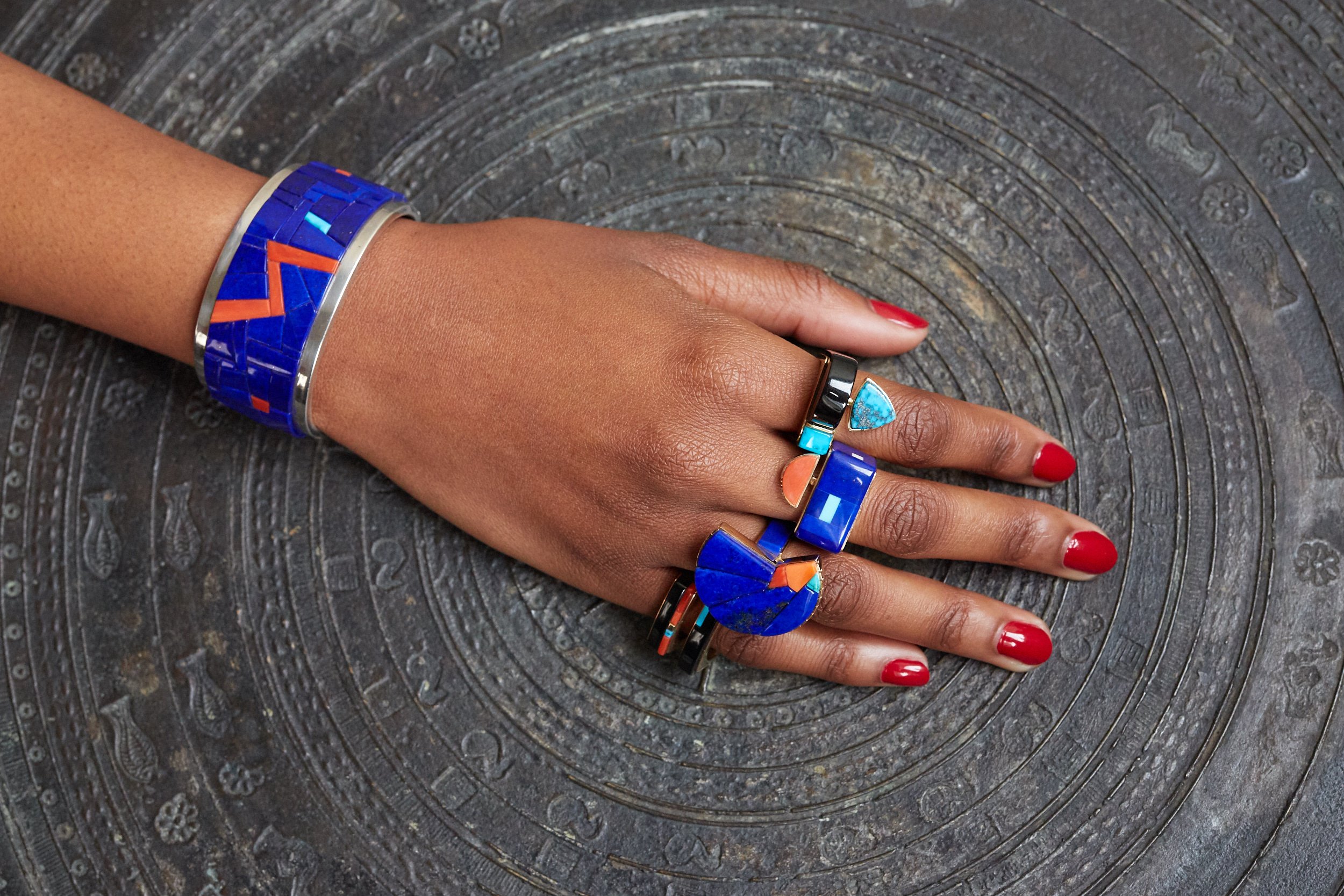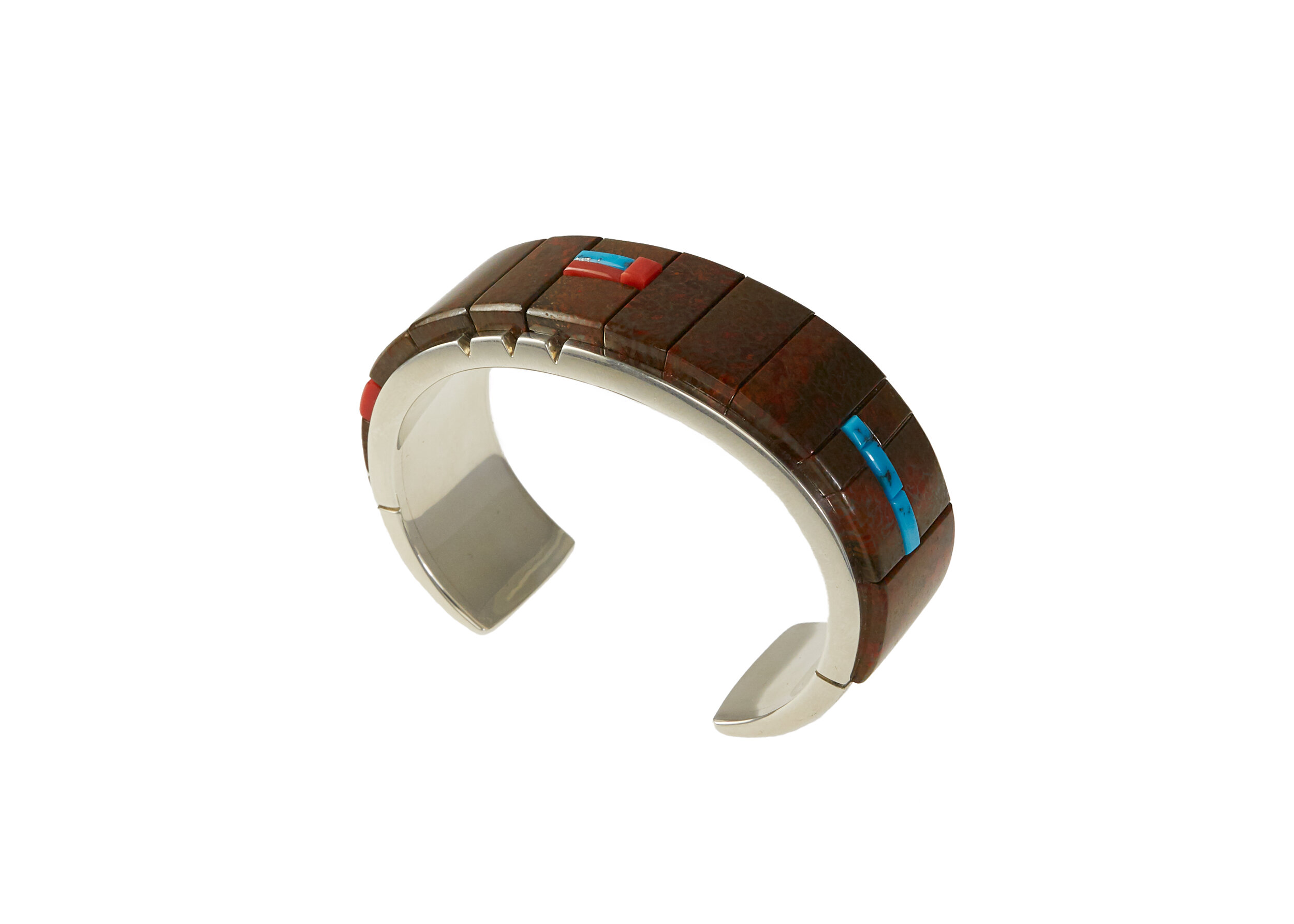RICHARD CHAVEZ (San Felipe Pueblo, b. 1949)
Richard Chavez has a background in architecture and is a fine lapidary artist and jeweler born and raised in San Felipe Pueblo, one of the more traditional Pueblo communities located alongside the Rio Grande in New Mexico. The San Felipe Pueblo is well-known for its arts and crafts, such as pottery, jewelry, and embroidery.
In the early 1970s, Chavez worked as an architectural draftsman for Harvey S. Hoshour, who had come to Albuquerque after working for renowned German architect Mies van der Rohe. During that time, Chavez attended the University of New Mexico's School of Architecture and began making jewelry in his free time to supplement his income.
Chavez learned how to make heishi and turquoise necklaces from his grandfather but soon taught himself silver work. He applied the minimalist architectural philosophy he had learned to his jewelry designs, emphasizing purity, sparseness, and balance. In 1976, he left his architectural career to pursue jewelry full time although he never gave up his architect’s table which served as his work bench.
Chavez combines irregular cuts of stone and carefully selected color schemes to create his modern refined pieces. He uses semiprecious and precious stones with turquoise as an accent color, so his jewelry stands out from other modern artists. Chavez’s architectural training gave him an eye for detail and structure, evident in his jewelry. Clean lines and simple geometrical shapes form elegant works of art that make his work distinctive. His jewelry is modern and crisp by enhancing minimalist design with bright accents of color. This bold look is derived from stones such as lapis lazuli, sugilite, turquoise, and red coral. Chavez has also expressed his admiration for Ludwig Mies Van der Rohe, the last Director of the Bauhaus, and his dictum, “Less is More.”
The Bahaus has had a profound influence on Chavez’s work. His respect for material, concentration on form, focus on graceful compositions of colored materials, and the harmony evident in his juxtapositions of stones signal that influence.
Each piece of jewelry has many steps involved from start to finish. Chavez begins with a sketch to determine the design, then solders, sands, cuts, polishes and finishes the lapidary process. He does each step entirely, from purchasing the raw stone to cutting and grinding it into shape and polishing it before it is set in gold or silver. Each stone requires at least ten steps before it is ready for its final polish and setting.
Since his first competition in 1976, Chavez's designs have won numerous awards. In 1990, he stopped entering judged competitions, feeling he no longer required that type of validation. Instead, he finds the positive reactions and comments from the public to be more gratifying than awards.
Of his artwork, he says, “When I first got into jewelry-making, my grandfather said, ‘Your talent doesn’t come from you; it comes from some outside source, so don’t ever take it for granted. Make sure you give your thanks and share that gift that you have.’ So that’s what I try to do.”
In 2017, the Heard Museum hosted the retrospective Symmetry in Stone: The Jewelry of Richard I. Chavez. Chavez continues to make commissioned pieces, and his work is in many prestigious public and private collections. In 2024, the New York gallery, R&Co. included Chavez’s work in their biennial exhibition, “Objects: USA.”
Visit our Native American Collection page to see jewelry from our inventory of exquisite Native American jewelry and purchase the catalog, Material Beauty: Modern Hopi, Navajo, and Pueblo Artist Jewelers. which accompanied our 2018 exhibition here.









